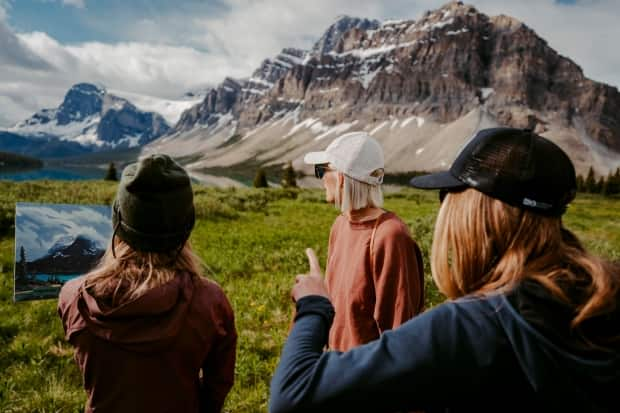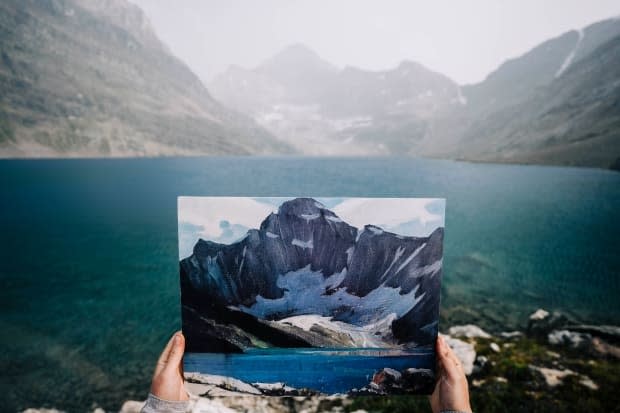Documentary explores climate change with mountain landscapes painted almost 100 years apart

Receding glaciers and smoky skies are some of the stark changes that come to mind when Caroline Hedin thinks about how the Rocky Mountains are changing.
She's spent the summer following a team of emerging artists as they travel to mountain landscapes painted by early Banff artist Catharine Robb Whyte in the 1930s, and create their own interpretations.
"The work that she did was beautiful, but now it no longer represents what the Rockies look like," said Hedin. "So we're kind of in need of a new representation of mountain culture and how we experience these places."
Hedin is the executive producer and director of a documentary called Rockies Repeat, a project that looks at climate change in the Canadian Rockies through art. She said the film didn't start out as a climate change project at all.
"It started more as a cultural exploration of changing mountain places," said Hedin. "But the impact of climate change was so profound and impactful to us that it's now at the core of our project."
Iconic landscapes through a different lens

The Rockies Repeat project captures iconic scenes of the Rocky Mountains, like Lake O'Hara and Bow Lake.
The team went to the Columbia Icefield in June 2021, when the heat dome pressed down on them. Standing in the place where Whyte would have painted in 1935 or so, they held up the print of her piece against the view.
"The ice was basically at her feet, but for us, the Athabasca Glacier is so far receded in less than 100 years. It's basically over the top of this rock wall moraine," said Hedin. "It looks like it's basically halved in less than 100 years. And it was extraordinary."
Six artists, three Indigenous and three non-Indigenous, are part of the project. They work in mediums including watercolour, acrylic paint and glass-blowing.

Their goal is not match the style of Whyte's original work — just to look at the same locations through new eyes, bringing their own backgrounds and cultural stories to their work.
Compared side-by-side
The Whyte Museum of the Canadian Rockies was constructed in 1968, named for Catharine and her husband, artist Peter Whyte. That's where the final pieces of Rockies Repeat, and the documentary, will be exhibited in January 2022 as part of the Exposure Photography Festival — right beside Catharine's original work.

"One of our artists included a person in one of her pieces looking out at a disappearing glacier, which is something you don't traditionally see in the mountain landscape," said Hedin. "They just have these fresh takes that are going to be pretty exciting to show people."
As part of Historic Calgary Week, Hedin is giving a virtual presentation about the Rockies Repeat project on Wednesday at 5 p.m. She will give a tour of the landscapes the team has visited, along with sneak peeks of the artists' work.
Visit chinookhistory.ca to watch the presentation and to find more information on Historic Calgary Week.
WATCH | How the Rockies Repeat project reflects on change over a century with art:
With files from The Homestretch.

